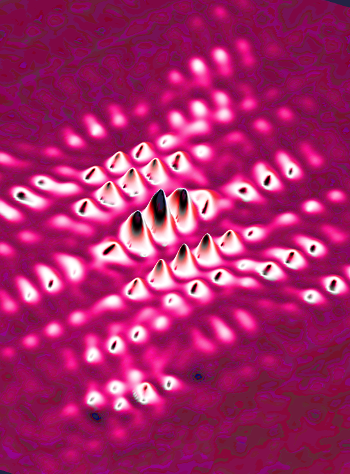New quantum chip detailed
 Australian engineers have come up with a new photonic chip to process quantum information.
Australian engineers have come up with a new photonic chip to process quantum information.
RMIT researchers in collaboration with experts from Italy and Switzerland have used topological photonics to fabricate a chip with a ‘beamsplitter’, creating a high precision photonic quantum gate.
Topological photonics is a rapidly growing field that aims to study the physics of topological phases of matter in a novel optical context.
“We anticipate that the new chip design will open the way to studying quantum effects in topological materials and to a new area of topologically robust quantum processing in integrated photonics technology,” says RMIT University’s Dr Alberto Peruzzo.
“Topological photonics have the advantage of not requiring strong magnetic fields, and feature intrinsically high-coherence, room-temperature operation and easy manipulation.
“These are essential requirements for the scaling-up of quantum computers.”
Replicating the well-known Hong-Ou-Mandel (HOM) experiment – which takes two photons and makes them interact according to the laws of quantum mechanics – the team was able to use the photonic chip to demonstrate, for the first time, that topological states can undergo high-fidelity quantum interference.
HOM interference lies at the heart of optical quantum computation which is very sensitive to errors. These sorts of topologically protected states could strengthen quantum communication, decreasing noise and defects prevalent in quantum technology.
This is particularly attractive for optical quantum information processing.
“Previous research had focussed on topological photonics using 'classical' –laser– light, which behaves as a classical wave. Here we use single photons, which behave according to quantum mechanics” says lead-author Jean-Luc Tambasco, PhD student at RMIT.
Demonstrating high-fidelity quantum interference is a precursor to transmitting accurate data using single photons for quantum communications – a vital component of a global quantum network.
“This work intersects the two thriving fields of quantum technology and topological insulators and can lead to the development of new materials, new generation computers and fundamental science” says Dr Peruzzo.







 Print
Print